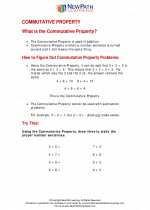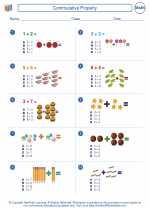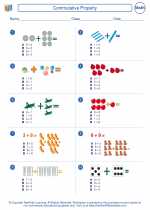Understanding the Sum
In mathematics, the term "sum" refers to the result of adding two or more numbers together. It is a fundamental concept that is often introduced in the early stages of learning arithmetic. Understanding how to find the sum of numbers is an important skill that lays the foundation for more advanced mathematical operations.
Finding the Sum
To find the sum of two or more numbers, you simply need to add them together. For example, to find the sum of 3 and 5, you would perform the following addition:
3 + 5 = 8
So, the sum of 3 and 5 is 8. When adding more than two numbers together, you can simply continue to add each number to the running total. For example, to find the sum of 2, 4, and 6:
2 + 4 = 6
6 + 6 = 12
So, the sum of 2, 4, and 6 is 12.
Study Guide for Finding the Sum
Here are some key points to remember when finding the sum of numbers:
- Start by writing the numbers in a vertical column, with the ones digits aligned.
- Begin adding the numbers from the rightmost column (the ones place) and move to the left, carrying over any excess to the next column.
- Continue this process until all numbers have been added together.
Additionally, it's important to practice finding the sum of numbers regularly to build fluency and confidence in this fundamental arithmetic operation.
By understanding the concept of the sum and practicing addition regularly, students can develop a strong foundation in mathematics that will support their learning as they progress to more advanced topics.
[Sum] Related Worksheets and Study Guides:
.◂Math Worksheets and Study Guides First Grade. Commutative Property

 Worksheet/Answer key
Worksheet/Answer key
 Worksheet/Answer key
Worksheet/Answer key
 Worksheet/Answer key
Worksheet/Answer key
 Vocabulary/Answer key
Vocabulary/Answer key
